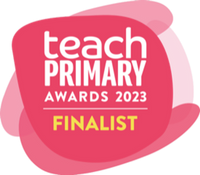For some of us, it’s the concern that is our default mental state, dominating our thoughts from the moment we roll out of bed and fix our minds towards a day of educating. The reason for the pervasiveness of such emotions is obvious: motivated students are a necessary prerequisite for learning to take place. It therefore cuts to the heart of our self worth as teachers.
What does a motivated and engaged learner look like?
If we are going to be successful in our jobs, we need to ‘bring our learners with us,’ and we often pride ourselves on our ability to do that. I’ll never forget a former colleague whose role saw her come into contact with some of the most challenging behaviours in the school, who had been called every name under the sun and brushed it off with warmth and professional grace, cutting an absolutely broken figure in the staff room after overhearing a student dismiss her lesson as ‘boring’. This stuff can really affect us.
The importance of engagement and motivation to the learning process is not something that is under dispute. What does present something of a challenge, however, is what exactly motivation is and what it looks like. Motivation, like learning, is experienced internally, and because it is internal it is invisible. As teachers, all we have are the outward signs of motivation and engagement, which can be difficult to measure. How do we know that a learner staring at his desk isn’t in deep contemplation? How can we tell that an outward sign of enthusiasm like an animated discussion isn’t in fact a sign of distraction?
We can find our ‘best bets’ by looking into the psychological research on motivation. If we understand the sources of this elusive emotional state, we can use that to inform the way we frame our classroom and homework activities.
What is motivation?
Motivation has been conceptualised as a process that gives behaviour its energy, direction, and persistence (Schunk, Meece, & Pintrich, 2014). A highly motivated student is one who devotes a substantial amount of time and effort to their study, who cares about the quality of the work they produce and possesses a desire to continuously grow their understanding and improve their skills.
But what is driving students to engage in these kinds of processes? What are the psychological factors that are at play?
In their work on supporting student motivation, Reeve et al. (2022) suggest that every one of the young people in our classrooms are imbued with a rich repertoire of innate motivational resources that, when activated and supported, are fully able to excite productive behaviours. These resources can be broken down into psychological needs, personal goals and self-endorsed values.
Psychological needs
Self-determination theory details three fundamental psychological needs as the source of intrinsic motivation. Julien Bureau has compared them to ‘kindling’, in the sense that they are what ‘ignites’ that elusive feeling of genuinely wanting to engage with an activity. They function in much the same way as biological needs like hunger or thirst, and failure to fulfil them will result in a person being unable to attain psychological well-being. Some important psychological needs that we all share include the need for ‘autonomy’ and the need for ‘competence’.
Autonomy refers to our need to feel a sense of ownership over our actions, a freedom from authoritative control and a sense of choice. If we are to do something, this suggests, we want to feel as though it is our own independent choice rather than something that has been imposed upon us. An autonomous action is one that we can say we are doing freely and voluntarily, without perceived coercion.
Competence, meanwhile, refers to the satisfaction gained from making progress in knowledge or skills. It comes from the process of seeking out challenges and exerting effort in taking them on. When we engage in this kind of behaviour successfully, we feel good about ourselves, and are therefore more motivated to continue the pattern of effort expenditure and challenge. This is an inverting of the popular wisdom that high motivation results in success, and suggests instead that success, or at least the feeling that success is attainable, in fact results in high motivation. The effects can be powerful. In his meta-analysis, Bureau found that feelings of competence rose to the very top of the factors most likely to ignite motivation.
Personal goals and self-endorsed values
The motivational resources at the level of psychological need are things we all share, but we also have resources that are acquired through experience and therefore vary from student to student. These 'acquired’ motivations arise from the process of learners ‘creating desired future states in their minds and then working to advance their current state of affairs to become that ideal state of affairs’ (Reeve et al., 2022). This is where ‘personal goals’ and ‘self-endorsed values’ come in.
Goals are aspirations for who we want to become and what we want to achieve. They can be noble and virtuous in nature, or they can be financially or materially directed. It can be social approval that a learner aspires to, or entry into a particular college or university, or simply a financially secure future. The point is, we all have something we strive for, and the feeling that a certain activity might accelerate us towards that desired future can be a huge motivating factor.
A value, on the other hand, can be thought of as a guiding principle for how to live a desirable life. We come to these understandings and principles via a range of different experiences and interactions, and we each have our own conception of what constitutes morality or ‘goodness’. But, if an activity falls within our conception of ‘good’ behaviour, we’re more likely to want to do it.
Where all this leaves us is with a set of questions that subconsciously drive our levels of motivation. When weighing up our engagement with an activity we’re really asking ourselves: Do I want to do it? Is it possible for me to achieve success at it? Will doing it help me to get to where I want to be? Does it feel like the right thing to do? If we’re answering ‘yes’ to these questions, we’ve hit upon that elusive feeling of ‘motivation’.
Implications for teaching practice
The research offers us a clear sense of direction when considering strategies for boosting engagement and motivation in lessons and homework activities. Extrinsic motivation will inevitably form a part of that strategy, but clear sanctions for disengagement must be coupled with an equally clear plan to excite intrinsic motivation through the satisfaction of psychological needs, personal goals and self-directed values.
In the case of Bedrock, then, some strategies to consider might begin with a clear expression of the value of consistent engagement with a research-informed, adaptive literacy curriculum. If your learners aren’t ‘doing their Bedrock’ as often as you need them to, ask yourself if they really know what tier two vocabulary is and whether they really understand how a broad and varied vocabulary can help them to communicate with power and authority, therefore opening doors to opportunities and futures of their own choosing. Communicating this message is likely to excite their psychological need for autonomy as well as encouraging them to make connections between their immediate action and their desired future goals.
Next, think carefully about how you plan to celebrate your learners’ successes. Use our points leaderboard and attainment leaderboard to identify learners whose usage and progress is exceptional, and find creative ways to shout about them - prizes, assemblies, social media etc. The leader boards also present a great opportunity for some front-of-class engagement to get learners excited about class competitions. But it doesn't have to be only the highest achievers that warrant this attention. Sometimes, the real value can be found in celebrating the small successes that can ignite a feeling of competence in even the most disengaged student. Click on the student’s name in your Bedrock dashboard, find out some of the words they’ve recently learned, and set the stage for them to use them in the classroom. If you can manufacture those moments of success, arousing for the learner a feeling of competence, the motivation will look after itself.
Take this as a moment to reflect on your motivational strategies. Ask yourself how much you tend to lean on punitive sanctions and how often you seek to actively build learners’ confidence or explain the relevance of a learning activity. The balance of these strategies in practice isn’t always in alignment with what the research is telling us (Newby, 1991).
Looking for more ways to motivate your learners on Bedrock? Download our free poster.





